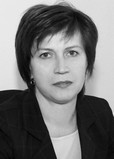Physical Education Quality Determinants According to Students
Фотографии:
ˑ:
PhD, Associate Professor L.N. Koval1
PhD, Associate Professor R.V. Gziryan1
PhD, Associate Professor G.V. Shiyanova2
PhD, Associate Professor A.P. Babchenko2
1North Caucasus Federal University, Pyatigorsk
2Pyatigorsk State University, Pyatigorsk
Objective of the study was to identify the levels of physical development and physical fitness of the 18-25 year-old students trained in different climatic geographic conditions.
Methods and structure of the study. The body component composition was determined using the impedance method. The level of physical development was evaluated based on the generally accepted parameters. The physical fitness rates were determined in the "field" tests.
Results of the study. The study showed that it is the Africans who have the greatest tension of chronoadaptation. They differ by the statistically significantly low body mass rates, low free and visceral fat mass rates, and high free water contents. Their physical development is characterized by the statistically low rates of body length, wrist dynamometry, chest circumferences at inhalation and exhalation, as well as low strength rates of physique with regard to EI. As opposed to the Slavs and Asians, the Africans have the weakest strength, speed-strength and coordination abilities.
Results of the study. The Asians are distinguished by the significantly high muscle mass rates, visceral fat mass rates, and EI. The Slavs have the highest rates in terms of body length, free fat contents, left and right hand dynamometry, EI, as well as the strongest strength, speed-strength and coordination abilities.
Conclusion. In the Slavs and Asians, the average body mass rate does not differ statistically significantly. Secular changes in the somatic status of young males residing in different areas vary due to the effects of environmental factors.
Keywords: ethnic group, students' body composition, physical development, physical fitness.
References
- Bratishchenko D.V. Globalizatsiya i problemyi vyisshego obrazovaniya v Rossii [Globalization and problems of higher education in Russia]. Nauchny vestnik Moskovskogo gosudarstvennogo teKhnicheskogo universiteta grazhdanskoy aviatsii. 2014. no.203. pp.4955.
- Gladkova M.V. Kachestvo uslug vuza: studencheskiy vzglyad [Quality of university services: student point of view]. Prakticheskiy marketing. 2007. no. 5. pp. 3035.
- Gordienko T.P., Smirnova O.Yu. IKT v obrazovanii: evolyutsiya k novomu kachestvu obrazovaniya [ICT in education: evolution to new quality of education]. Remote educational technology. Proc. I nat. res.pract. internetkonf. 2016. pp. 5558.
- Zotova V.A. Studencheskaya otsenka kachestva obrazovaniya kak element vnutrennego monitoringa kachestva obrazovaniya [Student assessment of quality of education as element of internal monitoring of quality of education]. National concepts of quality: improving quality in ensuring competitiveness of economy. Proc. Intern. res.practical conf. 2015. pp. 98100.
- Klimova N.I. Aspekty sovremennoy kontseptsii kachestva professionalnogo obrazovaniya v kontekste globalizatsii obrazovaniya [Aspects of modern vocational education quality concept in context of globalization of education]. Proc. Intern. res.practical conf. «Research and development in the era of globalization. 2017. pp. 197201.
- Kornev V.T. Suschnost i soderzhanie ponyatiy «kachestvo obrazovaniya», «monitoring kachestva obrazovaniya», «upravlenie kachestvom obrazovaniya» [Essence and content of concepts of quality of education, monitoring of quality of education, management of quality of education]. Nekotorye voprosy analiza, algebry, geometrii i matematicheskogo obrazovaniya.2015. no. 3. pp. 98100.
- Litvinov I.I. Monitoring kachestva obrazovaniya v upravlenii kachestvom obucheniya: sozdanie vnutrivuzovskih sistem menedzhmenta kachestva obrazovaniya [Monitoring of quality of education in education control quality: intrauniversity education quality management system design]. Problemy i perspektivy razvitiya obrazovaniya v Rossii. 2010. no.2. pp. 260262.
- Nikolaeva M.N. Kachestvo obrazovaniya i upravlenie kachestvom obrazovaniya – glavnyie problemyi sovremennoy sistemyi vyisshego obrazovaniya [Quality of education and education quality control key problems of modern higher education system]. Problems and prospects for current development of higher education. Proc. Intern. res.practical conf.. Elektrostal, 2010. pp. 2226.
- Ozernikova T.G., Butakova T. A. Kachestvo obrazovaniya prioritet razvitiya universiteta [Quality of education as priority for development of university]. Izvestiya Baykalskogo gosudarstvennogo universiteta. 2015. v. 25. no. 2. pp. 196205.
- Ruleva Ya.S. Mezhdunarodnaya model prepodavatelya vyisshey shkoly [International model of teacher of higher education]. Vestnik Kazahstansko Amerikanskogo svobodnogo universiteta. 2008. no.1. p. 23.
- Fedorova E.R. Diagnosticheskoe testirovanie kak sredstvo vyiyavleniya individualnyih osobennostey studentov [Diagnostic testing to identify students' individual characteristics]. Development of modern education: from theory to practice. Proc. V Intern. res.practical conf. 2018. pp. 3537.
- Adams D. Defining educational quality. Arlington: Institute for International Research. 1993. Available at: http://pdf.usaid.gov/pdf_docs/Pnaca245.pdf (accessed 02.04.2019).



 Журнал "THEORY AND PRACTICE
Журнал "THEORY AND PRACTICE